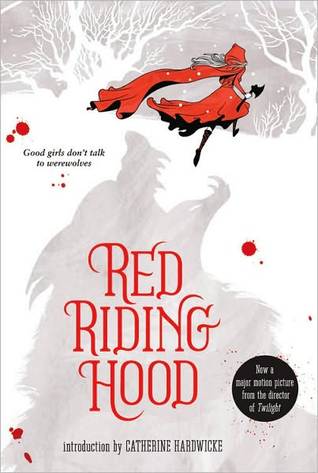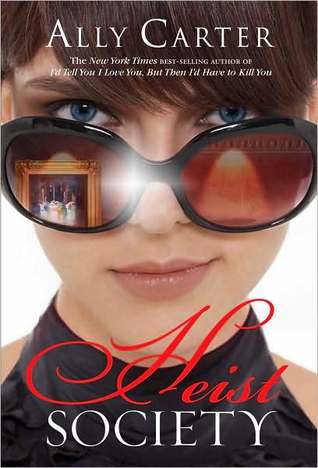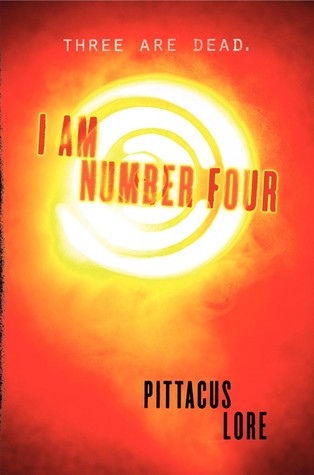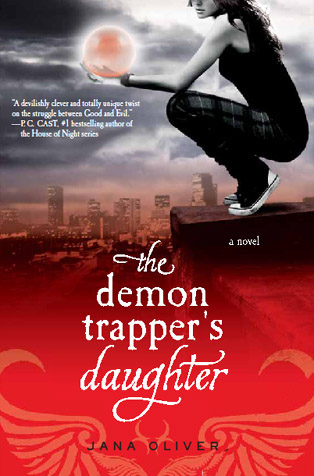
Ana's Rating
Readers Rating
The blacksmith would marry her.
The woodcutter would run away with her.
The werewolf would turn her into one of its own.
Valerie’s sister was beautiful, kind, and sweet. Now she is dead. Henry, the handsome son of the blacksmith, tries to console Valerie, but her wild heart beats fast for another: the outcast woodcutter, Peter, who offers Valerie another life far from home.
After her sister’s violent death, Valerie’s world begins to spiral out of control. For generations, the Wolf has been kept at bay with a monthly sacrifice. But now no one is safe. When an expert Wolf hunter arrives, the villagers learn that the creature lives among them–it could be anyone in town.
It soon becomes clear that Valerie is the only one who can hear the voice of the creature. The Wolf says she must surrender herself before the blood moon wanes… or everyone she loves will die.
I picked up Red Riding Hood hoping for a gothic twist on a classic fairytale, while keeping the seeming childhood innocence of the original, with a hint of romance. I was hoping for whimsical. Dark. Captivating.
I was terribly, terribly let down.
I’ll address my biggest issue with Red Riding Hood first: there was no ending. I read the whole flippin’ book only to find out–nothing! Blakley-Cartwright doesn’t tell you who the wolf is in Red Riding Hood! She asks you to go online to read the last chapter at http://www.redridinghoodbook.com/. Does anyone else see anything wrong with that?
Next, the love triangle. There’s Henry, the noble, loving blacksmith who defends Valerie in front of the whole town, and there’s Peter, who has no likeable qualities whatsover except for, oh yeah, he is brooding! But, as the description on the back of the book says, Valerie will choose Peter over Henry because they were childhood friends.
Red Riding Hood‘s characters have little depth, they constantly contradict themselves, and we don’t really understand their motives at all. I’ll give you an example:
“Valerie tried to resist. But now, after all the hardship, all the betrayal, the only thing she wanted was to be taken care of. It would be so easy.” (Valerie talking about giving into The Wolf.)
The next page:
“It was no longer a man or a Wolf; it was only a mass of evil that needed to be destroyed.” (Valerie talking about killing The Wolf)
Indecisive much?
However, I did enjoy Blakley-Cartwright’s writing skills. She managed write in the gothic way that really captured the essence of the fairytale. Her descriptions were probably my favourite part of Red Riding Hood. The world building was better than average, realistic, and believable.
Blakeley-Cartwright also well depicted the paranoia of Valerie’s town. When one member of a village is evil, and everyone in the village knows it, things can’t go well. What with the calling in of Father Solomon, who is the professional werewolf hunter, the accusations of witchcraft and the idiotic actions of the townspeople in the name of bravery, this paranoia was well portrayed.
I’ve read mixed reviews about Father Solomon’s character, and many believe him to be stereotypical and clichéd. But this is the retelling of a fairytale. Cliché is kind of the point!
Finally, Red Riding Hood merits 2.6/5 stars. For fans of silly, tepid, unbelievable romance and fantastic world building.
I’ll keep you posted,

Ana's Rating
Readers Rating
When Katarina Bishop was three, her parents took her to the Louvre… to case it. For her seventh birthday, Katarina and her Uncle Eddie traveled to Austria… to steal the crown jewels. When Kat turned fifteen, she planned a con of her own–scamming her way into the best boarding school in the country, determined to leave the family business behind.
Soon, Kat’s friend and former co-conspirator, the gorgeous Hale, appears, pulling her back into the world she has only just escaped. But he has a good reason: a powerful mobster’s priceless art collection has been stolen, and he wants it returned. Now. Only a master thief could have pulled off this job, and Kat’s father isn’t just on the suspect list, he is the list. Caught between the Interpol and a far more deadly enemy, Kat’s dad needs her help.
Kat’s solution: track down the paintings and steal them back. So what if it’s a spectacularly impossible job? She’s got two weeks, a teenage crew, and, hopefully, just enough talent to pull off the biggest heist in her family’s (very crooked) history. And, with any luck, she just might be able to steal her life back along the way.
I can count on one hand all the times I’ve read a book about thieves– and they’re all Nancy Drew s. Heist Society is a refreshing, atypical book from a criminal’s point of view, and I enjoyed it as one might enjoy eating a foreign chocolate: marveling at the conspicuously new taste, and immediately wanting more.
Katarina Bishop is three months into her new, normal, life at boarding school. She’s decided to call it quits with thieving and say adios to her family and its shady history–that is, until she gets expelled and her dad is threatened by a powerful art collector named Arturo Taccone who thinks he stole his paintings.
Kat has 14 days to get Tacconne’s paintings back, or she’ll have to kiss her dad goodbye–for real, this time.
So with the help of a crew from her not-so-former life, Kat tries to re-steal the paintings. Oh, wait. One little problem: She doesn’t know who stole them in the first place.
Heist Society is a mystery that had me hooked since the first chapter– an adventurous page-turner that kept me up at night.
Why?
First of all, I loved the culture. Fictional or not, the paintings that Kat tries to find are well-described and beautiful. The museums that she frequents are realistic and grand. Heist Society‘s world building is amazing, complete with a history so detailed that it makes you doubt that it is simply the figment of one talented woman’s imagination.
Additionally, I have respect for Kat. She is a heastrong, stubborn, savvy heroine whom I found very down-to-earth and relatable, which is a great feat, considering all she is trying to do is steal paintings for the majority of the book. I’m also quite glad that, although there is the potentiel for it, as well as the potentiel for a love triangle, there is no actual romance in Heist Society. I’m happy about this because, seriously, Kat has more important things to focus on. Whew! I needed a realistic break from the boy-crazy protagonists of the YA world. I mean, when’s the last time you read about a heroine who has no boyfriend not because she thinks she’s too ugly or too short or too pimply (And what is up with that? There are way too many look-at-me-I’m-so-mousy female characters out there!), but because she’s focused on saving her corner of the world? So thank you, Ally Carter. Thank you for an uber-refreshing, super-relatable, way-needed dose of reality!
I do, however, have one issue with Heist Society: the characters’ pasts. This book leaves you with 101 questions about Kat, her family, and her crew. Instead of pushing me to buy the sequel, Uncommon Criminals, though, all these questions leave me with the feeling that I never completely understood the characters.
My final word: 4/5 stars. For fans of mystery, adventure, and action.
I’ll keep you posted,


Ana's Rating
Readers Rating
In the Society, Officials decide.
Who you love. Where you work. When you die.
Cassia has always trusted their choices. It’s hardly any price to pay for a long life, the perfect job, the ideal mate. So when her best friend appears on the Matching screen, Cassia knows with complete certainty that he is the one… until she sees another face flash for an instant before the screen fades to black. Now Cassia is faced with impossible choices, between the only life she’s ever known and a path no one else has ever dared follow–between perfection and passion.
Matched is a story for right now and story-telling with the resonance of a classic.
Cassia Reyes lives in a world where everything is perfect and everyone is happy.
But when authority makes a mistake and her perfect world is turned upside-down, Cassia begins to question her Society. Can there be love without choice, trust without knowledge, meaning in predetermined life, or acceptance when all causes and signs of rebellion are smothered and hidden?
As Cassia explores falling in love with the wrong words, the wrong ideas and the wrong person, you will begin to ask yourself: is it better to live in a perfect world, or a free one?
And I love dystopians that make you question yourself and your beliefs. However, I do have some issues with Matched.
First up, the world building. Condie’s world is a forced utopia that is built marvelously. I am quite fond of the rules of the Society and justifications for them, and often found myself marking off pages so I would always remember the poetic snippets of thoughts that made me gape. Nevertheless, I found that Condie practically copy/pasted her world from that of The Giver (by Lois Lowry). So many aspects of the Society in Matched, such as the emotion-suppressing pills, the euthanasia, the job assignments and the regulation of children are one and the same as those in The Giver. I’m conflicted because, as a huge fan of dystopians, I recognize that some utopian worlds will be similar. I just feel that those of Matched and The Giver are a little too similar.
Moving on to the love triangle. First of all, there’s Xander, who’s always been Cassia’s best friend and is your typical nice, blond-haired, blue-eyed boy next door. And there Ky, the mysterious, brooding, hurt guy who’s always passed under Cassia’s radar. Does anyone else find that to be a little stereotypical? Other than the typicality, though, I was glad to find that the characters, especially Ky, have depth. I was reeled in by Ky’s past and am excited to find out more about him.
Another character that I loved was Cassia’s grandfather. He was a wise, self-deprecating old man who, I was astounded to discover, bared the weight of many secrets. Honestly, he was my favourite part of Matched.
And just because I can’t resist, here is a teaser. These are quite possibly my favourite sentences in Matched, not because of what they say, but because of what they mean. Life changing.
“My face looks back at me, distorted by the curve of the compact’s surface, the way it was at the Match Banquet. Then, the question I asked myself was: Do I look pretty?
Now the question I ask is: Do I look strong?“
My final declaration: 3.6 stars. A great read if you haven’t read The Giver, and a good read if you have.
I’ll keep you posted,

Ana's Rating
Readers Rating
Buy I Am Number Four on Amazon
Nine of us came here. We look like you. We talk like you. We live among you. But we are not you. We can do things you dream of doing. We have powers you dream of having. We are stronger and faster than anything you have ever seen. We are the superheroes you worship in movies and comic books–but we are real.
Our plan was to grow, and train, and become strong, and become one, and fight them. But they found us and started hunting us first. Now all of us are running. Spending our lives in shadows, in places where no one would look, blending in. We have lived among you without you knowing.
But they know.
They caught Number One in Malaysia.
Number Two in England.
And Number Three in Kenya.
They killed them all.
I am Number Four.
I am next.
I don’t know if I’ve acknowledged this before, but I’ve never been a fan of science-fiction. I’ve never liked E.T., couldn’t get through Frankenstein, and even though Journey to the Center of the Earth has cute actors, it bored me.
I am Number Four is surprisingly different.
First of all, I love the planet Lorien. I love the lush nature scenery, the way the community works and the Loric animals (although how a certain species can change their nature was never explained scientifically, which bugged me. I don’t care how far-fetched the explanation is, as long as there is one.) Having exceptionally good grandparents, I love how the Loric let their parents raise their children so they can help society advance while they are still young and capable. I love how the Loric were smart enough to reverse the pollution of their planet while they were still able, and how the planet, being a living thing, rewards half of them with super powers deemed Legacies. I love this planet.
Did I mention that the Mogadorians trashed Lorien and now all that’s left is a pile of rubble and that I’m only getting this information from the characters’ memories?
There are 6 Legacy-using Loric still alive. They live on Earth. And they are hunted.
John Smith, the main character, is one of these Loric. He is just coming into his powers, which are, admittedly, one of my favourite parts of I am Number Four. I enjoyed watching him harness his Legacies and was surprised at the variety of possible powers. I do have a few questions, though; what determines the Legacies that a specific Loric gets? Personality traits? Genetics? Destiny?
I am very attached to some of Lore’s characters, specifically Henri (John’s guardian) and Bernie Kosar (John’s dog). Henri, especially, has an outstanding passion for getting John back to Lorien and an overwhelming love for John himself. He is portrayed as wise and stays true to himself throughout the book.
I cannot say the same for 2 of the other characters.
One character in particular has a sudden change of heart 3/4 of the way through the novel. This is never fully clarified and seems to have happened for no other reason than convenience.
Aditionally, I found that I am Number Four lagged somewhat towards the ending, going a full 8 pages without dialogue (8 pages! Who does that?). I couldn’t take it and repeatedly put the book down because of boredom. Other than that, though, the book flowed well.
One more aspect of this novel bugged me: It is written in the 1st person from John Smith’s point of view. The author is named Pittacus Lore. Pittacus Lore is a character from I am Number Four. Doesn’t anyone else see anything wrong with that?
And then there’s the cliffhanger ending. Man. I don’t think that I’ve ever read a book with such a cliffhanger ending as I am Number Four. In order for this cliffhanger to exist, however, I feel that John has to betray his character by not obeying the very important words somebody whispers on their deathbed with their dying breath, due to ‘not having the heart to do it now.’ I mean, come on! Doesn’t that seem just a little too planned out?
All in all: I am Number Four was okay. Not horrible, but not a book I’d read again. I’ll definitely read the sequel, but in my opinion, it should never have been made into a movie. There are far better books for that. 3.4/5 stars.
I’ll keep you posted,

Ana's Rating
Readers Rating
Buy The Demon Trapper’s Daughter on Amazon
It’s the year 2018, and with human society seriously disrupted by the economic upheavals of the previous decade, Lucifer has increased the number of demons in all major cities. Atlanta is no exception. Fortunately, humans are protected by Demon Trappers, who work to keep homes and streets safe from the things that go bump in the night. Seventeen-year-old Riley, only daughter of legendary Demon Trapper Paul Blackthorne, has always dreamed of following in her father’s footsteps. When she’s not keeping up with her homework or trying to manage her growing attraction to fellow Trapper apprentice, Simon, Riley’s out saving citizens from Grade One Hellspawn. Business as usual, really, for a demon-trapping teen. When a Grade Five Geo-Fiend crashes Riley’s routine assignment at a library, jeopardizing her life and her chosen livelihood, she realizes that she’s caught in the middle of a battle between Heaven and Hell.
I love the idea of this book. The dystopian world was well built and captivating, the main plot was interesting, the ending was unexpected and beautiful. But I’m not sure if all the parts of this idea were well executed.
One thing especially irked me. In a world where gas prices are insanely high and Riley has serious trouble paying her rent, how can she own a car?
How Riley treated fellow trapper Beck also drove me insane! I understand her prejudices against him, but I wish that at some point she’d just get over it already and stop assuming the worst of him, especially after all of his help.
And then there’s all the love interests. In The Demon Trapper’s Daughter, there is not only a love triangle, as in so many other YA books, but the potential for a love square. I mean, how many guys can like one girl? Unrealistic!
But enough with all the negative.
I’ve always adored the classic Girl VS. Boy battle, and The Demon Trapper’s Daughter has an interesting take on it. While becoming a demon trapper in a Guild that is traditionally male, Riley’s life is not easy. Every mistake she makes is blamed on her sex, and the stakes are high, what with her father being the most famous trapper in the Atlanta Guild. And when more powerful demons start attacking Riley, she makes a lot of mistakes.
I also thoroughly enjoyed the demonology. It added a fun twist to the world building and didn’t bore me like the usual info-dumping. I loved how the demon’s are sorted into classes, grade 1 demons being the relatively wicked, sort of cute, lesser demons, and the grade 5 ones being the all-powerful, murderous, very dangerous hell-spawn.
Riley. Though I hate her name and at times groaned at her complaining and screamed at her stupidity, she proved to be a strong, kick-crack heroine. She has relative depth and an an appealing perception of milk. (Moo juice! Who knew?)
I am likewise fond of Oliver’s world. I loved how, in the future, some parts of Atlanta were reduced to the past; due to the high prices of gas, horse-drawn carriages are a common mode of transportation. School is held in abandoned coffee shops and grocery stores. People believe in witchcraft and sell holy water at the market.
The holy water, of course, is a matter of convenience. In the midst of the age-old clash of Heaven versus Hell, the demon trappers and hunters (who knew that they were so different?) must overcome the demons. Riley, who definitely has something to prove, must overcome the demons. But when grade 5 hell-spawn comes after her… who knows who’ll win?
My final proclamation: A good dystopian read that flows well and is relatively entertaining. For fans of the paranormal and girl power. 3.5/5 stars.
I’ll keep you posted,



![[Twitter]](http://www.whatyareading.com/wp-content/plugins/bookmarkify/twitter.png)
